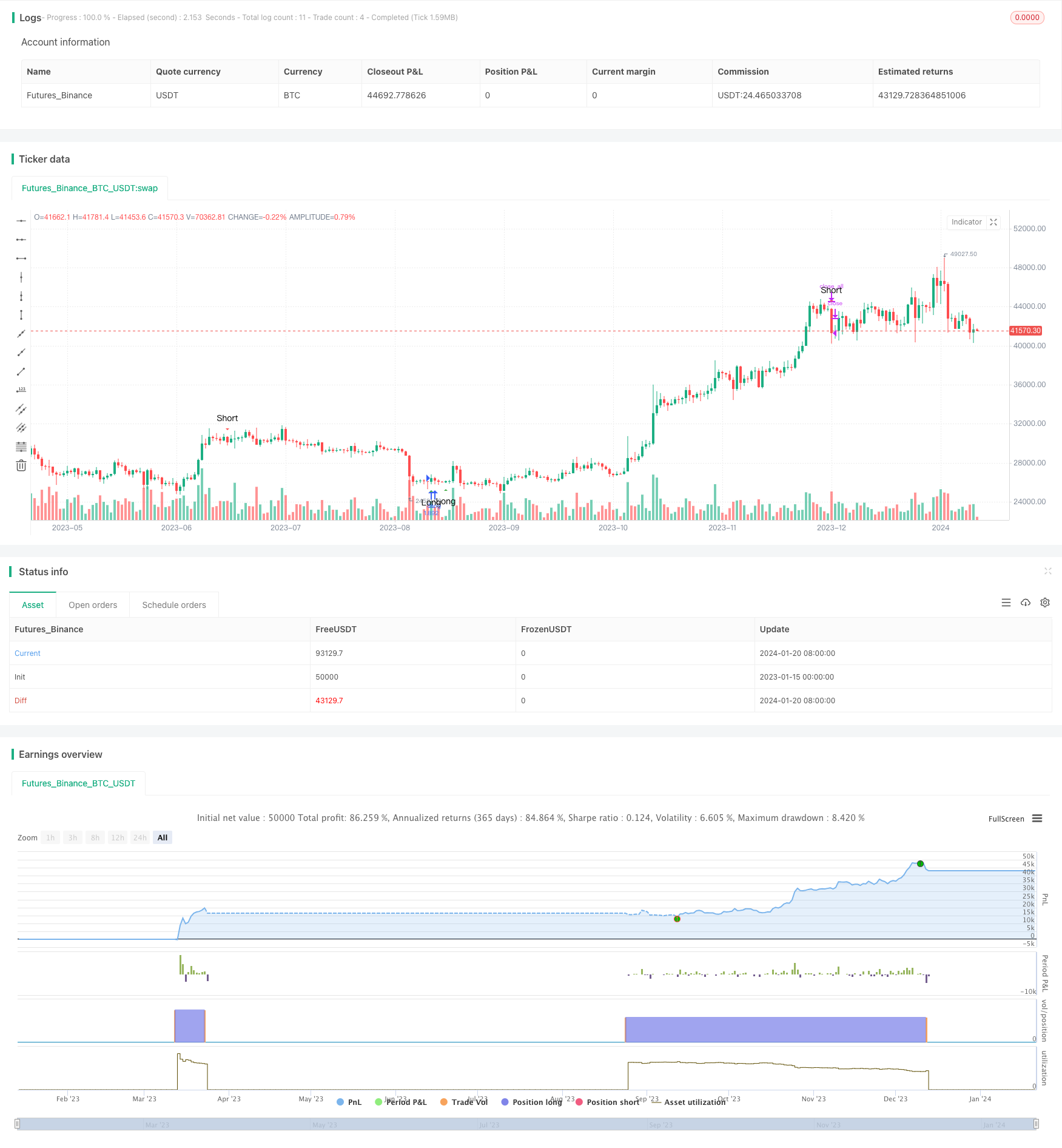
概述
该策略是基于BTCUSDT 4小时时间周期的DCA趋势交易策略。其主要思想是在RSI指标超买超卖区域形成背离的时候,发出交易信号。然后采用DCA趋势追踪的方式,进行多次加仓建仓,将仓位分散开来降低风险。策略主要特征是风险低、原理简单易操作。
策略原理
该策略使用RSI指标判断超买超卖信号。RSI大于等于70为超买信号,小于等于30为超卖信号。当RSI从超买区域向下跌破或从超卖区域反弹的时候,说明可能形成顶部,发出做空信号;当RSI从超卖区域向上突破或从超卖区域反弹的时候,说明可能形成底部,发出做多信号。
但为了进一步确定信号,该策略还辅以包容型K线形态判断。因此当RSI反转的同时,如果出现超买反转背离为阴线,超卖反转背离为阳线,那么就发出确定的交易信号。这样可以进一步减少错误信号的概率。
一旦出现交易信号,如果是多头信号,就按照平仓价格的一定比例开仓做多,然后继续追踪连续设置买入止盈委托单实现DCA效果,策略允许最多5档仓位;如果出现空头信号,那么会把当前所有的多单仓位全部平仓。
优势分析
该策略最大的优势在于风险可控。首先,RSI指标结合K线形态过滤可以大大减少错误信号率,确保信号的可靠性。其次,采取分批建仓DCA策略,可以分散风险,即使走势不利也对单个仓位损失有控制。而且允许的最大仓位数只有5仓,仓位集中度不会太高。再次,仓位亏损达到一定程度就会止损,可以避免单次大亏损的发生。所以从整体上来看,该策略风险可控是其最大优势。
风险分析
该策略最大的风险在于持仓时间可能会比较长。采用DCA策略和趋势追踪方式,会导致仓位持有时间比较长,特别是行情不利走势的时候。这就有可能增加仓位成本,甚至面临反转亏损风险。
此外,建仓逻辑较为复杂也增加误操作风险。需要综合判断RSI信号和K线信号,操作难度较大,一旦判断失误就容易形成错误建仓。这对初学者而言是比较大的考验。
优化方向
该策略可以从以下几个方面进行优化:
增加止损逻辑。可以在一定亏损条件下强制止损,避免单个仓位出现过大亏损。
优化仓位比例。可以测试不同的仓位大小,寻找风险收益比更优的仓位设置。
测试其他指标。可以测试不同的指标如MACD、KD等替代或辅助RSI,看是否可以提高信号准确度。
优化时间周期。可以测试不同的时间周期参数,寻找更匹配该策略逻辑的周期参数组合。
总结
该低风险DCA趋势交易策略以RSI为主,辅以K线信号,采用追踪止盈的方式实现DCA加仓。策略风险可控,适合对抗市风险能力较弱的投资者。但也存在仓位时间过长和误操作判断等问题。通过不断优化可以提高策略表现。总体来说该策略值得推荐。
/*backtest
start: 2023-01-15 00:00:00
end: 2024-01-21 00:00:00
period: 1d
basePeriod: 1h
exchanges: [{"eid":"Futures_Binance","currency":"BTC_USDT"}]
*/
//@version=4
strategy("Phil's Pine Scripts - low risk long DCA Trend trade", overlay=true)
////
//// trade on BTCUSDT 4H chart
//// $500 balance = $50 per trade, max 5 positions
//// backtested 54% profit over 3 years (~270)
////
//// define $ amount per trade
position_size = 50000
//// Plot short / long signals
// Get user input
rsiSource = input(title="RSI Source", type=input.source, defval=close)
rsiLength = input(title="RSI Length", type=input.integer, defval=14)
rsiOverbought = input(title="RSI Overbought Level", type=input.integer, defval=70)
rsiOversold = input(title="RSI Oversold Level", type=input.integer, defval=30)
// Get RSI value
rsiValue = rsi(rsiSource, rsiLength)
rsiOB = rsiValue >= rsiOverbought
rsiOS = rsiValue <= rsiOversold
// Identify engulfing candles
bullishEC = close > open[1] and close[1] < open[1]
bearishEC = close < open[1] and close[1] > open[1]
tradeSignal = ((rsiOS or rsiOS[1]) and bullishEC) or ((rsiOB or rsiOB[1]) and bearishEC)
// Plot signals to chart
plotshape(tradeSignal and bullishEC, title="Long", location=location.belowbar, color=color.green, transp=0, style=shape.triangleup, text="Long")
plotshape(tradeSignal and bearishEC, title="Short", location=location.abovebar, color=color.red, transp=0, style=shape.triangledown, text="Short")
//// DCA long trade when there is a bullish signal
if tradeSignal and bullishEC
strategy.entry("OL", strategy.long, qty=position_size / close)
//// Close all positions when there is a bearish signal
if tradeSignal and bearishEC
strategy.close_all()